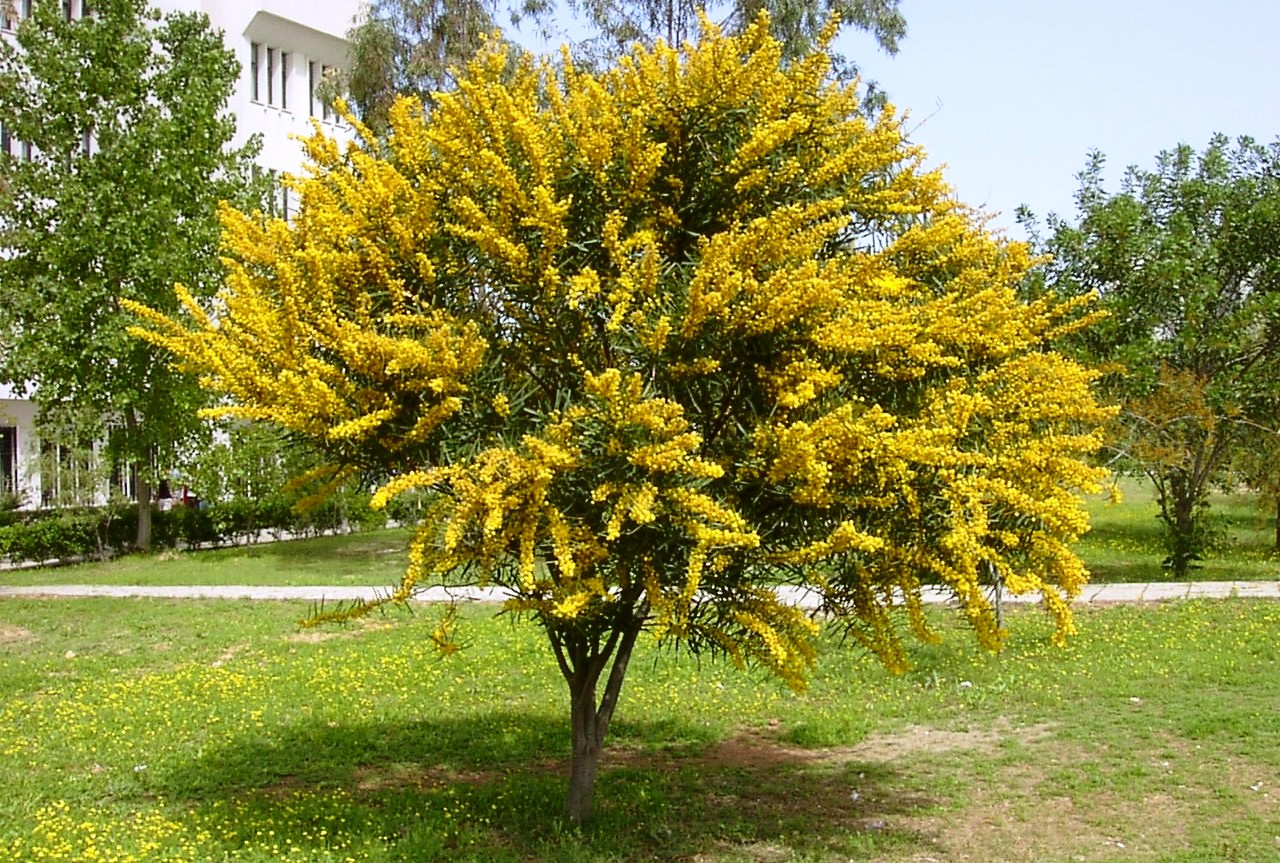
Acacia
Acacia spp.
Basic Information
🌿 Family: Fabaceae🗺️ Zone: 9-11
Other Names:
- Wattle
🌡️ Ideal Temperature : 65°F – 85°F
🔥 Heat Tolerance: Up to 100°F
❄️ Cold Tolerance: Down to 20°F
🌱 Type: Perennial
Layers
- Canopy
Functions
- Nitrogen Fixer
- Pollinator
- Wildlife Attractor
- Erosion Control
- Windbreaker
- Biofuel
Pests
No pests associated with this plant.
Companions
- Eucalyptus
- Casuarina
- Grevillea
Plants to Avoid
- None known
Description
Acacia is a diverse genus of shrubs and trees known for their feathery foliage and fragrant, showy flowers, which range in color from creamy white to vibrant yellow. These plants typically reach heights between 5 to 12 meters (16 to 40 feet), depending on the species. Acacias are well-adapted to arid environments, featuring deep root systems that allow them to access groundwater, and many species possess thorns as a defense against herbivores.
🌞💧 Sun and Water Requirements:
Acacias thrive in full sun and prefer well-drained soils. Once established, they are highly drought-tolerant and require minimal watering. Overwatering can lead to root rot, so it's essential to allow the soil to dry out between watering sessions.
✂️🫘 Methods to Propagate:
Propagation is commonly achieved through seeds or cuttings. Seeds often have a hard coat and benefit from scarification or soaking in hot water to enhance germination rates. Plant seeds approximately 2 centimeters (0.8 inches) deep in moist soil with temperatures above 15°C (59°F). Cuttings should be taken during the summer months and placed in well-draining soil.
🧑🌾👩🌾 When to Harvest:
While acacias are not typically harvested for edible parts, their flowers and seed pods can be collected for various uses. Harvesting times vary by species and local climate conditions.
Purpose
In permaculture, acacias serve multiple functions:
- **Nitrogen Fixation**: As members of the legume family, acacias enrich soil fertility by fixing atmospheric nitrogen, benefiting surrounding plants.
- **Pollinator Support**: Their abundant and fragrant flowers attract bees, butterflies, and other pollinators, enhancing biodiversity.
- **Wildlife Habitat**: Acacias provide shelter and food for various bird species and small mammals.
- **Erosion Control**: Their extensive root systems stabilize soil, making them valuable for preventing erosion in degraded landscapes.
- **Windbreaks**: Taller acacia species can act as effective windbreaks, protecting other plants from strong winds.
- **Biofuel**: Fast-growing tree, wood can be converted into charcoal or biomass energy.